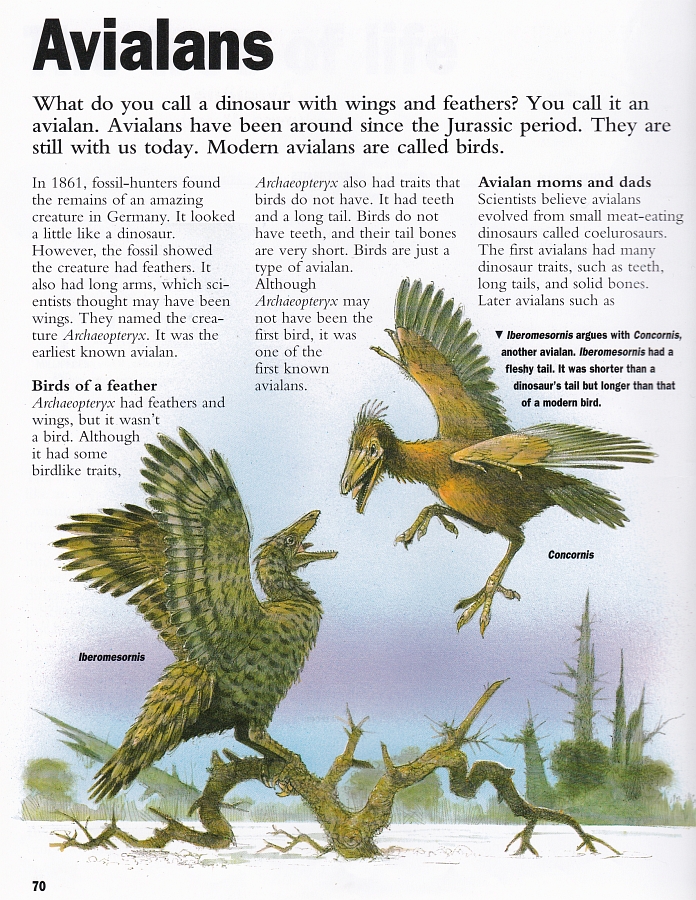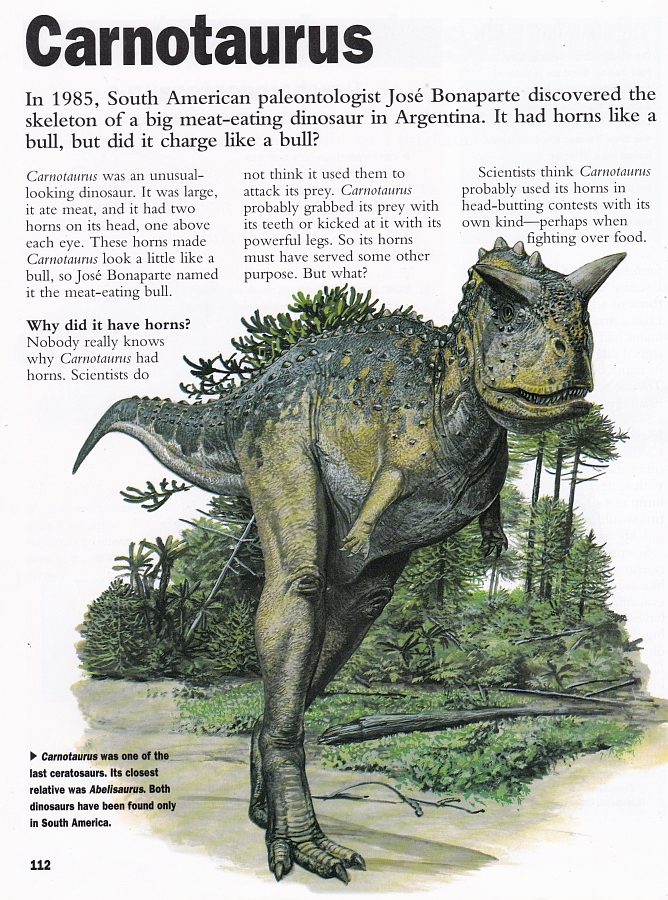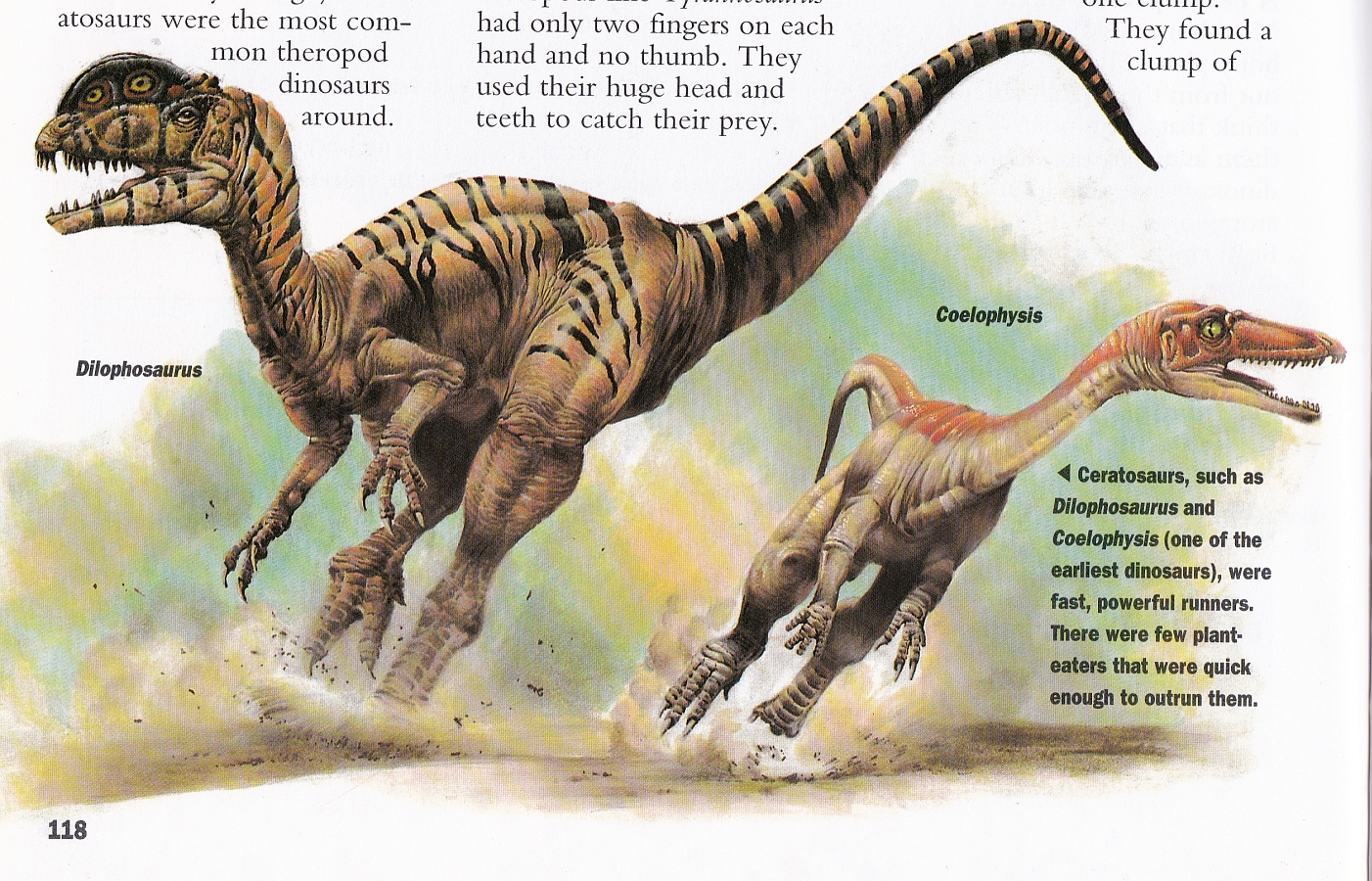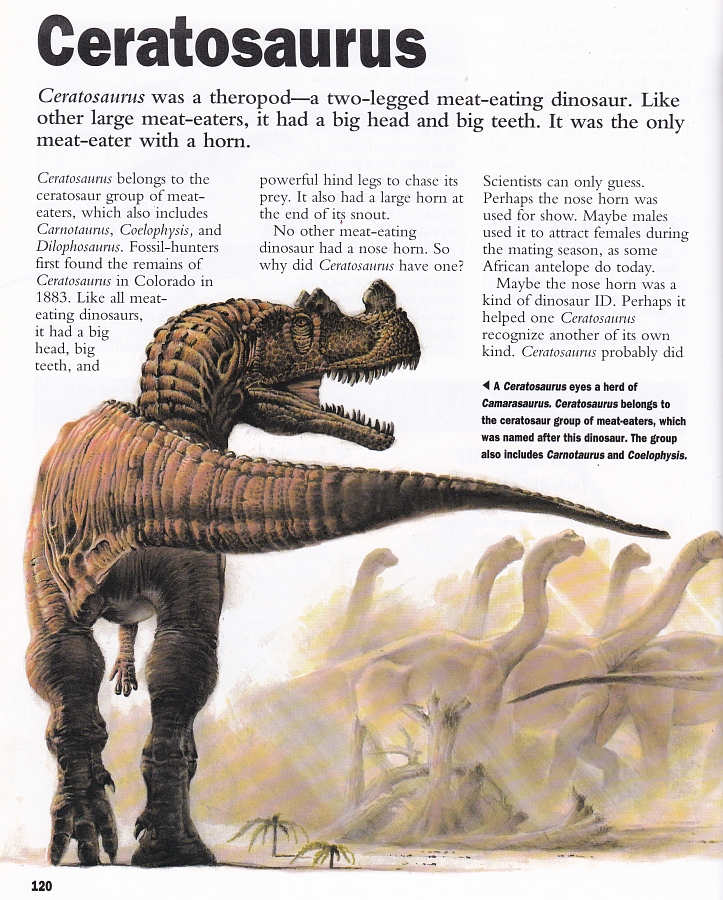When speaking to Steve White not so long ago – in relation to his work on Dinosaurs! – he told me about a multi-volume dinosaur encyclopedia he’d also played a part in back in the ’90s. Steve contributed illustrations alongside LITC favourites Jim Robins and Steve Kirk among others, while the text was written by the likes of Paul Barrett, Tom Holtz and Mark Norell. Sadly, the encyclopedia – published by Marshall Cavendish in 1999 – was only ever sold to schools, which rather doomed it to obscurity.
Of course, as soon as Steve mentioned it to me, I had to go and find a copy. And, well, I didn’t manage to acquire the whole set…just the one part. Part two, as it happens. But it’s a still a lovely little slice of long-lost late ’90s palaeoart goodness.

In fact, there’s so much great work in here that I’ve decided to split it up over a couple of posts. Starting with theropods because they are, quite obviously, the very best and sexiest dinosaurs that there ever were (and literally the only dinosaurs that are still around, so they win by default). And wouldn’t you know, it part 2 – ‘Avi-Cha’ – opens with an excellent illustration of some flooftastic theropods that manages to be considerably better than a lot of the dreck that the poor, unfortunate children of today have foisted upon them in their dinosaur books. The Iberomesornis in particular is very lovely, with beautifully patterned, well-observed and very believable plumage. Jim Robins did a wonderful job here.

Given the excellent illustrations of birds (more of which to come), and the book’s absolutely unapologetic pushing of ‘birds are dinosaurs’, it’s a little peculiar to happen upon the above illustration of Avimimus. It’s an amusing irony that Sibbick’s Normanpedia illustration, which would go on to be copied countless times over by other artists (like every illustration from that book), was actually feathered – even if it was (in hindsight) thoroughly wrong in every other respect. Meanwhile, other reconstructions that were much nearer the mark (like this one) often depicted the animal as scaly. Of course, and as can clearly be seen in my scan, the book’s text does mention the possibility of feathers, and the reconstruction is good enough to look suitably like a plucked chicken, even with the ’90s Greg Paul arms. It’s also worth praising artist Steve Kirk for the excellent patterning on the animal’s skin, which manages to be attractive, interesting, and plausibly close to living animals, but original.

Now here’s our first Steve White contribution – Baryonyx. Yes, this piece is very, very 1990s, what with its gnarly, slightly shrink-wrapped dinosaur and gratuitous blood and guts. EXTREME! But at the same time, it’s actually unusually sedate. Yes, what it’s doing with that fish is rather messy, but the Baryonyx itself is simply sitting down in a manner evocative of modern flightless birds, except it has a honking great crocodile head. Get over that alarming-looking protruding shoulder blade, and there’s an awful lot to like here. The shading, especially around the animal’s massive, quite frighteningly muscular legs (and rightly so), is fantastic. I also love that the animal’s fingers are curled around its prize; too many illustrations continue to show the digits of large theropods permanently extended in the manner of a skeletal diagram. Nice one Steve.

Back to birds and, indeed, Jim Robins. I know, I know; was it really necessary to include avialans and ‘proper’ birds, when the latter could have been folded into the former (and it’s arguably a matter of semantics anyway)? The correct answer is that it doesn’t matter if it means we’re treated to more excellent illustrations. Presbyornis in particular was an extremely rare sight in popular dinosaur books back in the day, even when the likes of Gastornis did put in an appearance. Why is it depicted alongside the considerably older Hesperornis here? I’m not sure. It might just be one of those illustrative composites of non-contemporaneous animals; there’s certainly nothing in the text to say that they lived together.
The main thing is, it’s a ’90s book (albeit only just) that’s pushing Birds Are Dinosaurs. “Because birds are descended from dinosaurs, we say they are dinosaurs. Just like we say people are primates because, like apes, we descended from primates.” Yeah, I know that birds are birds and whales are whales, and saying “whales are artiodactyls!” to people is just being unnecessarily clever-clever. But I still think it’s a good way to introduce phylogenetics to people, and lest we forget, phylogenetics is moon man talk.

Moving on to something altogether more uncontroversially dinosaurian, here’s Sharky McSharkTeeth, as beautifully illustrated by Steve Kirk. Just look at those wonderful skin textures, the (again) convincingly naturalistic patterning on the skin, and the use of perspective that’s so good, you don’t even notice how well he’s pulled it off at first glance. (Seriously, try drawing a non-avian theropod from this angle. It’s a sod.) And now that I’ve praised it to the heavens, I’d like to address that feeling you have that something isn’t quite right here. What you, as a good dinosaur geek, have noticed is that this creature has been restored along the lines of a much smaller allosaur – something like Allosaurus itself. It’s too leggy, its arms are too long, and its head is too small, even if the head in isolation does happen to have been observed really well. I’m not going to blame Kirk for this (magnanimous as I am) because it’s remarkably common in reconstructions of this animal from the ’90s, but it is an interesting thing to note. And that aside, this is a really lovely illustration. I remain a big Kirk fan.

As affirmation of Mr Kirk’s praiseworthiness, here’s a Carnotaurus that, for the time, is exceptionally bloody good (and from that tricky perspective again!). Carnotaurus is a weird beast – far weirder than many people realise, even now in an age when it’s possible to Google ‘Carnotaurus skull’ and retrieve high-quality images of its noggin from multiple angles within seconds. I think a lot of this illustration’s effectiveness is in the combination of detailed background foliage and yet another superbly realised skin pattern. Even without a complete double-page spread to call home, this animal looks entirely of a piece with its environment. It looks, in spite of its entirely realistic absurdity, utterly believable. It does help that Kirk has done a fantastic job on the animal’s scaly skin here. I’d want to reach out and touch it, if I wasn’t afraid it’d bite my hand off.

What’s next? Coelophysis? Well, yes and no. This piece is actually from a page entitled ‘ceratosaurs’. For the benefit of our younger readers, there was a time when Coelophysis and Dilophosaurus tended to be regarded as early ceratosaurs, because they had notches in their jaws and were kinda primitive-looking, or something. Regardless, this is another piece from Steve White, and while it does again look very ’90s (especially in its shrinkwrappery) it remains an excellent display of his technical skill and attention to detail. While I do have a terrible theropod foot fetish, I’d like to point out the Dilophosaurus‘ right foot in particular. See the way the toes are drooping slightly, and the tiny flap of skin joining them? That’s what I’m talking about. Oh, and those stripes are quite dashing.

And finally (for now)…more White. I’m quite sure this Ceratosaurus also appeared elsewhere, possibly even in Dinosaurs!, although driving over to my parents’ house to check that right now feels like far too much effort. There’s a little bit of a Gurche vibe to this one, whether intentional or not; it’s there in the Michelin Man skin and the brown. So much brown. It’s like a Jurassic version of Mario Kart 64‘s Choco Mountain, except no one’s ineptly drifting into the walls. Joshing aside, this is more beautiful work from Steve; I just get sick of praising the guy. I’d draw your particular attention to the animal’s calf muscles and lower legs in general – there’s your real proof that Steve cares and knows what he’s doing, and that I do indeed have a theropod foot fetish.
Next time: non-theropods! I mean, if I can even be bothered.







4 Comments
carl
May 25, 2018 at 3:50 amAbsolutely stunning artwork pity it’s publication was so restricted .Just for schools? why can’t it go out to the general public!!!!. not fair.
animecharley
May 25, 2018 at 8:23 pmMy local library has a partial set scattered over several branches. A year or two ago, I checked out what volumes were available and scanned them. I’ll check on what I have and will try to get back with the info in a few days.
Anonymous
May 27, 2018 at 2:13 pmI think the pattern of the Avimimus was inspired by a collared lizard (Crotaphytus)
Luiz Germann
April 7, 2019 at 4:56 pmPlease, post all the pages. I want to translate it to the portuguese and mount twi volumes, one english and one portuguese.